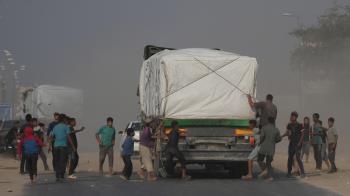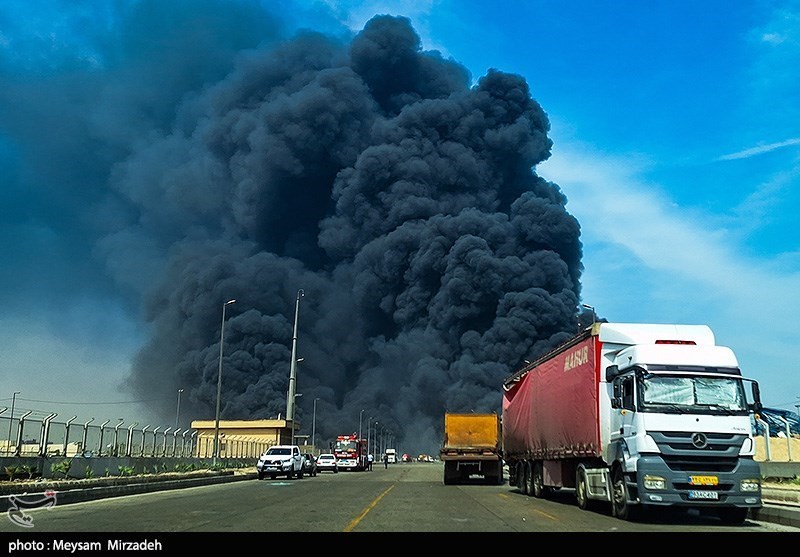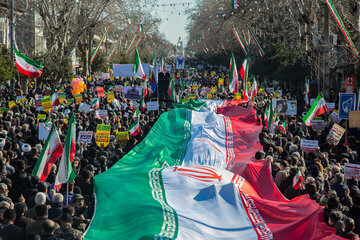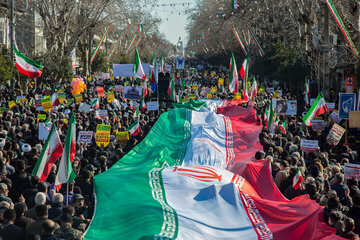Alwaght- While the US claims its airstrikes in Yemen have degraded the military capabilities of Ansarullah resistance movement, pieces of evidence suggest continuation of the offensive power of Sana'a and failure of the new round of US aggression in the Red Sea that is meant to provide a cover to the Israeli regime which is subjected to maritime blockade by Yemen in solidarity with Gaza.
At the same time, with Secretary-general of Ansarullah Sayyed Abdul Malik al-Houthi saying that the movement is going to unveil new military capabilities in the future, new surprises may be expected under "blow for blow" equation.
The aggression outcomes and Trump's claims
With the US air campaign nearing its second week, no considerable results have been achieved as Trump and his administration officials claim. The core aim of the campaign was to secure Israeli navigation in the Red Sea and Sea of Oman. But not only the Americans are far from this aim, but also they have failed to guard depth of the occupied territories against Yemeni missile and drone strikes.
On the other hand, the US has also defined targeting prominent political and military leaders of Ansarallah as one of its objectives behind its attacks. In this regard, not only was it unable to assassinate or weaken Yemeni military leaders, but also it is experiencing the bitter taste of defeat once again, at high costs and without forming an effective coalition.
In the middle of these setbacks, Trump is still boasting of what he calls success of air campaign and keeps deploying new naval ships to the region, something suggesting that the White House is more focusing on psychological warfare and display of power than real field achievements. The deployment of USS Harry Truman aircraft carrier and the attempt to drag Arab countries into the conflict were only part of these policies. On the first night of the attack, about 50 air and naval attacks were carried out, with the illusion of destroying Ansarullah's offensive and its deterrent power at once. However, two weeks later, with more than 300 to 400 air and naval attacks recorded, with an average of 30 to 40 attacks per day on the provinces of Sana'a, Sa'ada, Al-Hodeidah, Marib, Al-Jawf, Amran and Dhamar, the Yemeni attacks continue deep into the occupied territories. In fact, evidence shows that the situation is going against American predictions.
US failed to defend Israel
An examination of the field developments can make it clear for us that Washington has suffered high financial and reputational costs. Actually, this campaign has failed to salvage the Israeli navigation and now even the American naval vessels are targets to Yemeni missiles. On the other side, Yemeni strikes have reached depth of the Israeli regime and the Israeli pressures on Washington bear witness to failure of the US attacks.
While the White House claims to have weakened Yemen's military capabilities, the reality is that the Yemeni weapons stockpiles remain undamaged and ready for operations. The Ansarullah leader has stressed on the development of military capabilities and has implemented the equation of escalation for escalation or balancing the level of conflict.
Blind attacks and US moral collapse
In his speech on Quds Day, Ansarullah chief ridiculed the US claims, adding that Washington is covering up its military failures by striking civilian places in Yemen.
The Pentagon tried to deny attacking residential areas, but evidence shows that since the beginning of the war, densely populated Yemeni areas have been targeted, including neighborhoods in the capital Sana'a, industrial plants in Hudaydah, livestock farms in Al-Jawf, and even cancer hospitals in Sa'ada. These actions have not only tarnished the moral reputation of the US government and military, but also show that the alleged objectives of these attacks are completely contradictory to its human rights slogans.
Failure in psychological warfare
Along with launching the attacks, the US intended to intimidate the Yemeni people with a "shock operation." But to its frustration, the Yemenis with "million rally" the next day brought this strategy to its failure.
The US initially claimed that the invasion would last “a few days or weeks”, but after numerous setbacks, it avoided stating a specific time frame. In addition, the disclosure of documents and correspondence about the plans for this invasion, through American publications, has created a new security scandal for the Trump administration.
On the contrary, by targeting American aircraft carriers, the Yemenis have been able to challenge American military hegemony amidst global astonishment and disbelief, and have shown their strength and defensive strength against the most severe attacks, effectively placing themselves in the media and public opinion of the nations of the region as an emerging regional power. This steadfast stance in support of the oppressed Palestinian people will certainly strengthen Ansarallah’s regional position.
US deterrence instruments turned into a challenge
Dispatch of a new aircraft carrier to the Red Sea not only has not changed the equations, but also increased the vulnerability of the American fleet to the Yemeni hypersonic missiles and drones. In the past, the US beside Saudi Arabia and other aggression countries launched hundreds of strikes on Yemen, but failed to bring Sana'a to its knees. So, larger military fleet will make no difference.
The US was hopeful to embroil the Arab countries into its war on Ansarullah, but it failed to do so, and this is one of the signs of its failure in Yemen.



























